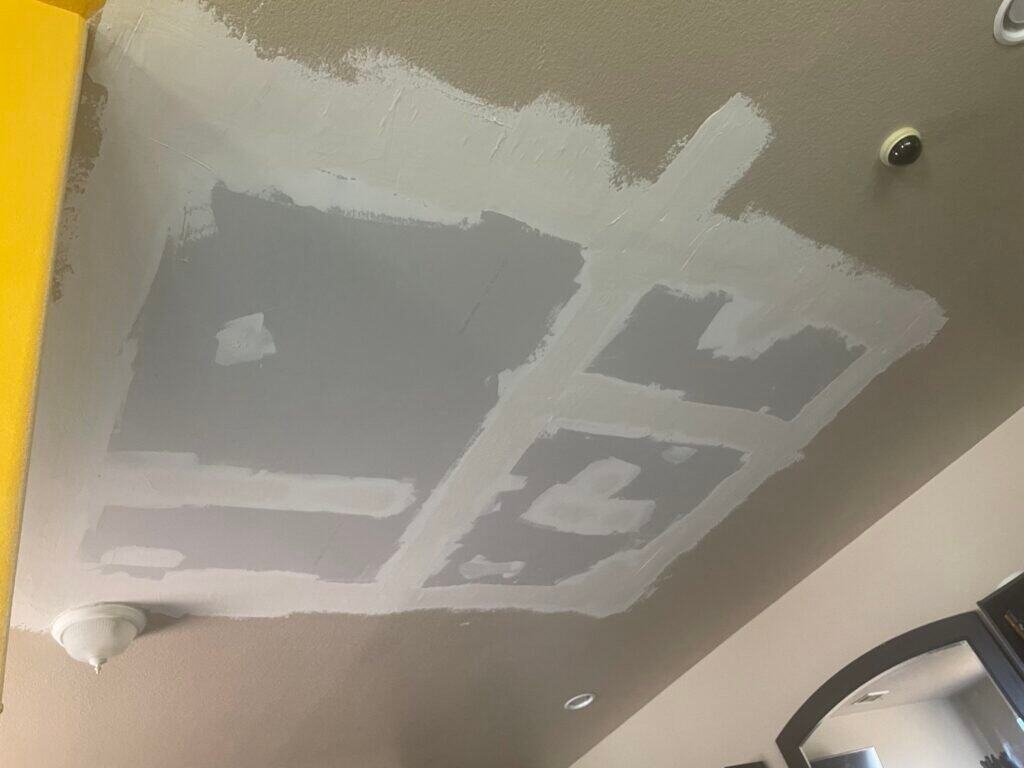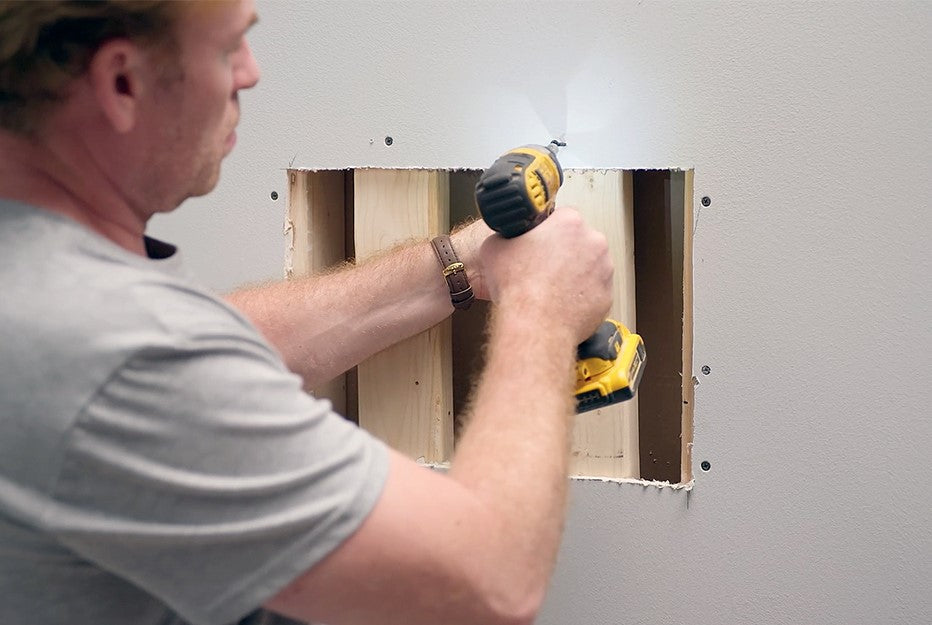A Comprehensive Guide to Mastering Drywall Repair Service and Setup
This overview supplies a detailed exploration of drywall fixing and installation, providing to both beginners and experienced professionals. It details vital devices, methods for patching and hanging sheets, and the crucial finishing processes. Drywall Installation Ogden Utah. By recognizing common risks, people can attain refined outcomes. Understanding these skills not only enhances one's home however likewise develops confidence in DIY ventures. What foundational suggestions will guarantee a successful job from beginning to end up?
Essential Tools for Drywall Repair and Setup
When starting on drywall repair and installment, a couple of important devices can substantially enhance the effectiveness and quality of the work. A drywall blade, generally readily available in different sizes, is crucial for applying joint substance and smoothing joints. A taping blade is likewise essential for feathering sides and making sure a seamless surface. Additionally, a drywall saw or utility knife permits precise cutting of drywall sheets to fit any room.

Step-by-Step Guide to Patching Holes
Patching openings in drywall is an uncomplicated process that can bring back the wall's look and stability. To begin, the area around the hole should be cleaned up and any type of loose debris removed. For small holes, a basic spackle or joint substance can be applied with a putty knife. Bigger openings may need a spot; an item of drywall can be reduced to fit the opening, safeguarded with adhesive or screws, and after that taped around the edges. As soon as the patch remains in location, joint compound is applied over the spot and feathery bent on blend with the surrounding wall. After the compound dries out, fining sand is required to achieve a smooth finish. The repaired location can be keyed and painted to match the remainder of the wall. This method assures a smooth fixing, enhancing the general appearance of the drywall and maintaining its architectural stability.
Techniques for Hanging Drywall Sheets
After effectively fixing openings in drywall, the following step involves hanging brand-new drywall sheets to develop a smooth surface. To attain this, one should begin by determining the wall room accurately and reducing the drywall sheets to fit. It is important to hang the sheets flat for much better structural integrity, beginning with the top and working downwards.
Using a drywall lift can simplify the procedure, specifically for ceiling setups. As soon as positioned, protecting the sheets with drywall screws at intervals of regarding 12 inches along the sides and 16 inches in the area is crucial. This assures a strong hold and minimizes the threat of drooping. For edges, the sheets ought to be reduced to fit snugly, enabling cleaner seams. It is a good idea to stagger the joints in between sheets to enhance the total framework, creating an extra resilient coating ready for the next stage in the drywall installment procedure.
Finishing Touches: Taping and Mudding
Finishing the drywall setup entails the vital actions of find this taping and mudding, which ensure a smooth and sleek surface. Insulation requires the application of joint tape over the seams in between drywall sheets. drywall contractors. This tape can be either paper or fiberglass fit together, with each type offering one-of-a-kind advantages. After taping, the following action is mudding, where joint compound, or "mud," is put on cover the tape and load any flaws
Using a drywall knife, the compound should be spread out uniformly, guaranteeing a feathery side to decrease visible adjustments. Multiple coats are commonly needed, with fining sand in between each layer to accomplish a smooth surface. Careful attention throughout this process is crucial, as it considerably influences the last look of the wall. With the best technique and persistence, the end outcome will be a flawless structure all set for paint or ending up touches.
Common Blunders to Stay Clear Of in Drywall Projects

One more common error is not permitting sufficient drying out time in between layers, which can trap wetness and endanger the coating. Additionally, neglecting to feather the edges appropriately can develop noticeable lines and blemishes. Missing sanding or using incorrect techniques might leave rough spots. By understanding these mistakes, individuals can greatly improve the high quality of their drywall projects and attain a professional-looking finish.
Often Asked Concerns
Can I Repair Drywall Without Specialist Assist?
Yes, one can repair drywall without expert aid. With the more tips here right devices, materials, and support, individuals can successfully handle minor repair services. Nevertheless, significant damage may require professional competence for optimal results and toughness.
The Length Of Time Does Drywall Substance Take to Dry?
Drywall compound normally takes in between 24 to two days to completely dry completely, depending on elements such as moisture and temperature. Thinner layers might dry out much faster, while thicker applications require more time for you could try this out ideal results.
What's the Best Type of Paint for Drywall?
The very best type of paint for drywall is typically a water-based latex paint. It gives outstanding coverage, toughness, and ease of application, making it suitable for indoor walls while permitting easy clean-up with soap and water.

Just how Do I Prevent Mold on Drywall?
To stop mold and mildew on drywall, warranty appropriate air flow, control moisture degrees, utilize mold-resistant materials, and quickly attend to any leakages. Normal evaluations and instant removal of water damage are likewise important for long-lasting prevention.
Is Drywall Recyclable After Elimination?
Drywall is recyclable after removal, supplied it is without contaminants like mold and mildew, paint, or other unsafe materials. Recycling centers can process it into brand-new products, promoting sustainability and lowering garbage dump waste in building and construction.
When starting on drywall fixing and installation, a couple of essential devices can substantially improve the efficiency and quality of the work. After efficiently repairing openings in drywall, the next action includes hanging brand-new drywall sheets to produce a smooth surface. Finishing the drywall installation includes the vital actions of taping and mudding, which ensure a sleek and smooth finish. Attaining a sleek coating in drywall jobs can be challenging, and several typical blunders can undermine the top quality of the job. Yes, one can repair drywall without specialist aid.